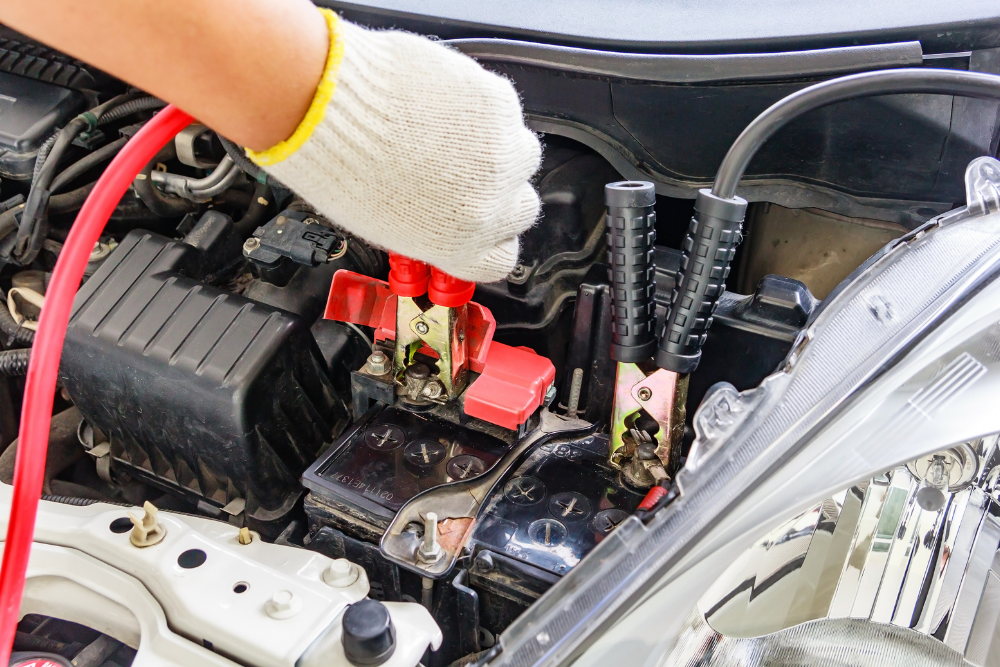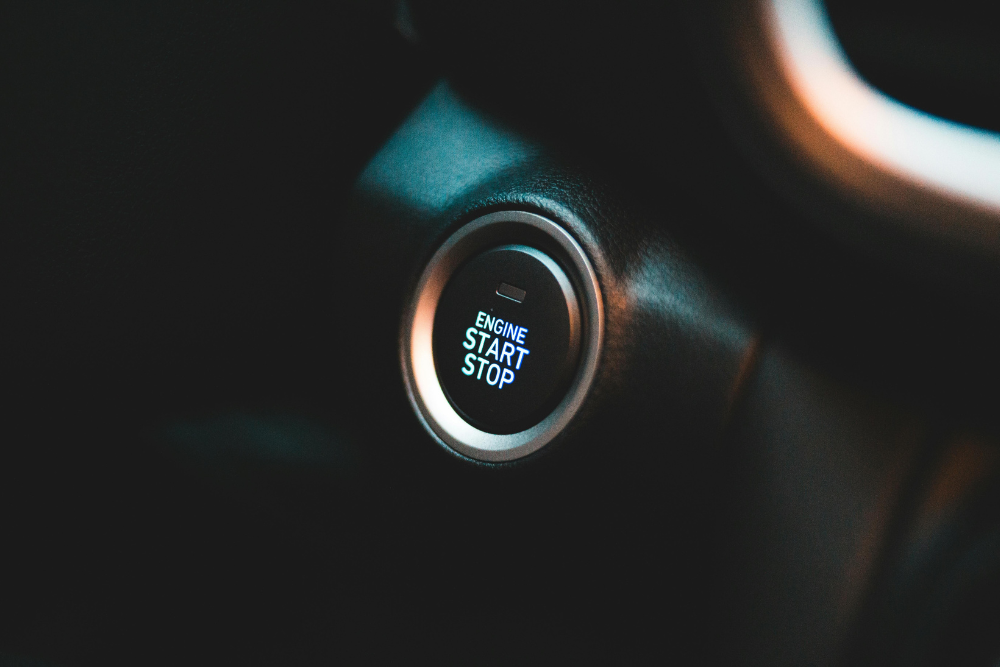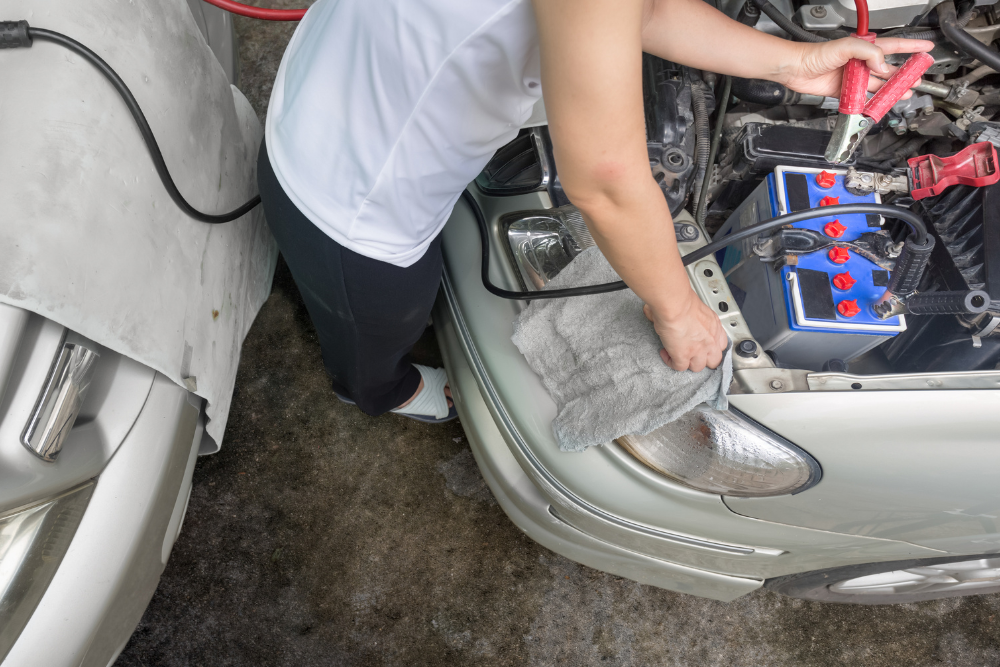
How to Jump Start a Car
How to Jump Start a Car

Knowing how to jump start a car is a handy skill that can get you out of trouble when faced with a flat battery. However, it's crucial to perform this task safely to avoid any damage to the vehicle or personal injury. Here’s a step-by-step guide on how to jump start a car effectively and safely.
What You'll Need:
- A set of jumper cables with a surge protector.
- Another vehicle with a fully charged battery (donor vehicle).
Steps to Jump Start a Car

Prepare Both Vehicles
- Park the donor vehicle close to the car with the dead battery but ensure they do not touch. Turn off both vehicles and remove the keys from the ignition.
- Ensure all electrical accessories (like radios and lights) are turned off in both cars to prevent electrical spikes.
Identify Battery Terminals
- Open the hoods of both cars and locate the batteries.
- Identify the positive (+) and negative (-) terminals on both batteries. The positive terminal is usually marked with a plus sign and may be covered by a red cap.
Connect the Jumper Cables
- To connect jumper cables, attach one end of the red jumper cable to the positive terminal of the dead battery.
- Connect the other end of the red jumper cable to the positive terminal of the donor battery.
- Attach one end of the black jumper cable to the negative terminal of the donor battery.
- Connect the other end of the black jumper cable to an unpainted metal surface on the engine block of the car with the dead battery. This is a grounding connection, which helps to safely manage any electrical surges.
Start the Donor Vehicle
- Start the engine of the donor vehicle and let it run for about 3 minutes. This allows the dead battery to receive some charge.
Start the Car with the Dead Battery
- Try to start the car with the dead battery. It might take a few attempts and the engine may crank slower than usual.
Let the Engine Run
- Once the car with the dead battery starts, let it run while still connected to the donor car for a few more minutes. This helps stabilise the charge.
Disconnecting the Jumper Cables
- Turn off both vehicles.
- Remove the jumper cables in reverse order of how you connected them. Start by disconnecting the black cable from the ground in the car with the previously dead battery, then from the negative terminal of the donor battery.
- Next, remove the red cable from the positive terminal of the donor battery, and finally from the car that was jump-started.
Aftercare
- Do not turn off the engine of the jump-started car immediately after removing the cables. Drive the vehicle for at least 30 minutes to allow the alternator to fully recharge the battery.
Safety Tips
- Always use quality jumper cables that match the power requirements of your vehicle.
- Never connect the negative cable directly to the negative terminal of the dead battery to avoid sparks and potential battery explosions.
- Ensure the jumper cables do not dangle into the engine bay where they can catch on moving parts.
- If you’re unsure or uncomfortable with the process, it’s wise to call for professional roadside assistance.
How to Push Start a Car

In addition to jump starting, push starting is another method that can be used for cars with manual transmissions when the battery is too weak to start the engine. This method should not be used on cars with automatic transmissions, given the way their transmissions are set up makes push starting unfeasible. To push start a car, make sure the area is safe and flat enough to allow the car to gain some momentum when pushed.
First, turn the ignition key to the "on" position, but do not start the car. Press down the clutch pedal fully and put the car in second gear. Have helpers push the car until it reaches a steady speed of about 10-15km/h, or gain enough momentum by rolling down a slight incline. Once at the appropriate speed, quickly release the clutch pedal. This should cause the engine to turn over and start. Immediately press the clutch again to prevent the car from stalling, and let the engine run to build up the battery charge.
When performing a push start, it's important to ensure that the process is done safely and without causing harm or strain to those pushing the car. Always check that the pathway is clear and free of obstacles. Additionally, using this method too frequently can put extra strain on the vehicle's engine and transmission.
Start Your Journey to Car Ownership with OnlyCars NZ
Whether jump starting with jumper leads or push starting with strength and willpower, it’s essential to handle the situation safely and effectively. Regular maintenance and checking your car’s battery life can help prevent unexpected battery failures and keep your car running smoothly. If you’re unsure or uncomfortable with the process, it’s wise to call for professional roadside assistance.
If you're in the market for a new vehicle, start your buying journey today with Only Cars NZ. With thousands of listings from verified dealers and private sellers, we take the hassle out of car buying and make it easy to find your next car. Explore our range of cars for sale and find your dream car today!